{Click on an image to enlarge, then use the back button to return to this page}
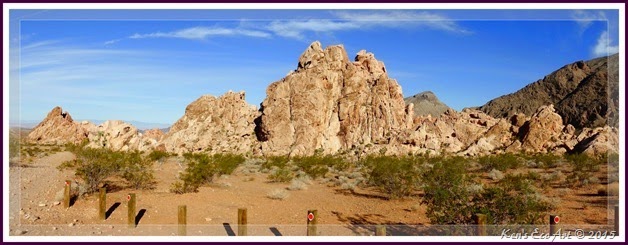 |
| (Fig. 01) |
|
Description: After leaving the I-15 and driving south for approximately 30 miles on Gold Butte Road, a roughly paved road that climbs steadily to an elevation of 3,100 feet, the pavement ends at a location called Whitney Pocket where it passes through a break in the mountains. This area, located at the base of the Virgin Mountains is a palette of color. Whitney is the surname of an original landowner, "Pockets" is due to the pocket of red Aztec sandstone that has been exposed by the erosion of the lower fringes of the Virgin Mountains. This grouping of yellow, tan and rusty red sandstone outcrops exhibit unusual erosion patterns of cave-like holes and bowls (Figs. 01, 04 and 05).
06/10/2015 Trip Notes: This was our fifth visit to Gold Butte and the Whitney Pocket area. The extremely large parking and camping area located here make it the perfect stating area to unload either the Rhino (Fig. 02) or quads, depending upon what we have taken to explore the area. While unloading I captured a picture (Fig. 03) looking towards the west. Though a little hard to make out in this photo, the Valley of Fire State Park is on the far horizon. Click these links for pictures and descriptions of today's adventures ... Kirk's Grotto; and Little Finland.
 |
| (Fig. 02) |
 |
| (Fig. 03) |
|
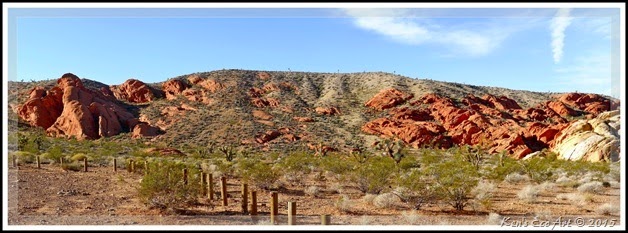 |
| (Fig. 04) |
|
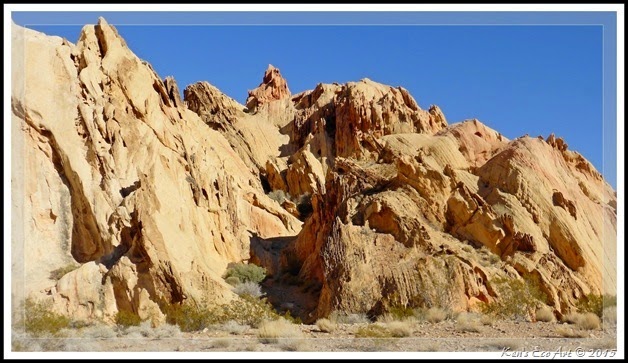 |
| (Fig. 05) |
|
02/05/2014 Trip Notes: Rainwater that pools in the depressions here has been a valued resource for desert travelers going back in time as far as early Native Americans (the Anasazi). Between 1933 to 1942, the Civilian Conservation Corp (CCC) built a concrete dam on the north side of the road at a crevasse in the sandstone in an attempt to catch water (Figs. 06 & 07). Using the steps built along the right side of the dam, we climbed to the top and walked along its rim ( Fig. 08). Piping from the dam leads to a livestock watering trough near the mouth of the crevasse (Fig. 09). A nearby cave was walled in by the CCC. Parts of the walls are now disintegrating rapidly and a sign urges the public to assist in conserving what remains. In spite of CCC and cattlemen’s efforts to harvest the scarce water supplies, this region does not favor successful ranching. The summers are unbearably hot and often the winters are quite harsh. The area is loaded with other CCC artifacts, along with native petroglyphs and evidence of their civilization. As we were unable to locate the petroglyphs, we need to make another stop here in the future.
|
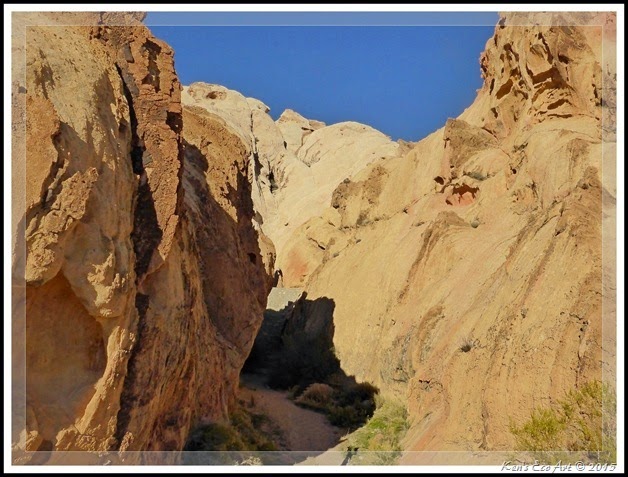 |
| (Fig. 06) |
|
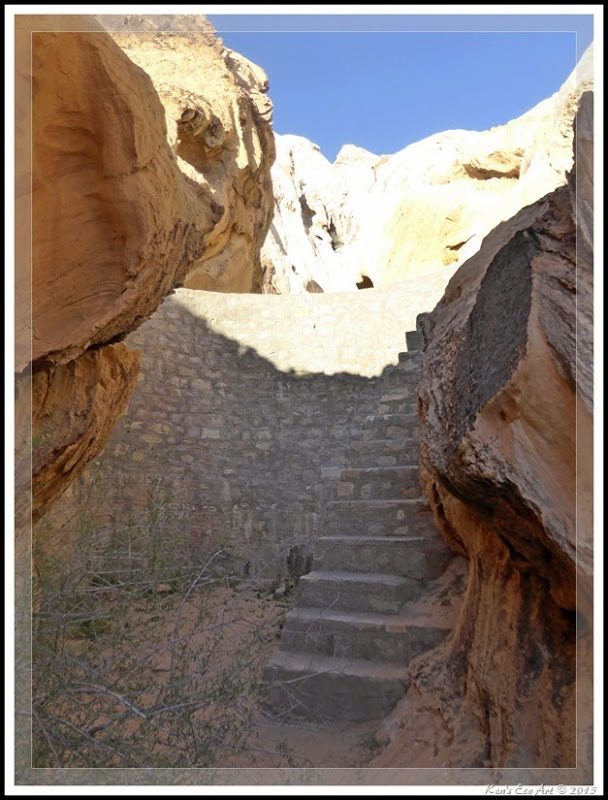 |
| (Fig. 07) |
|
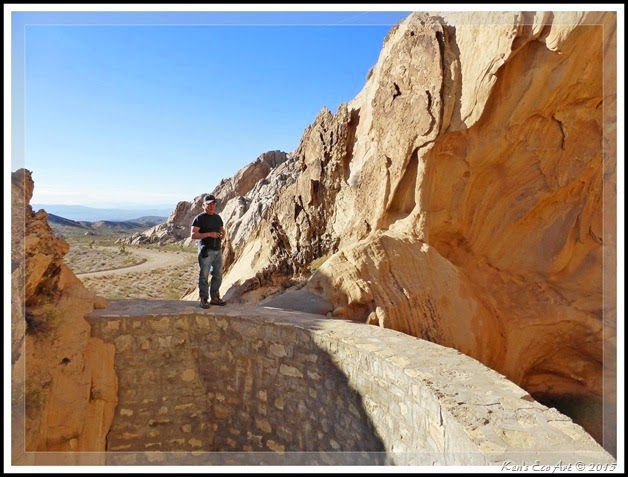 |
| (Fig. 08) |
|
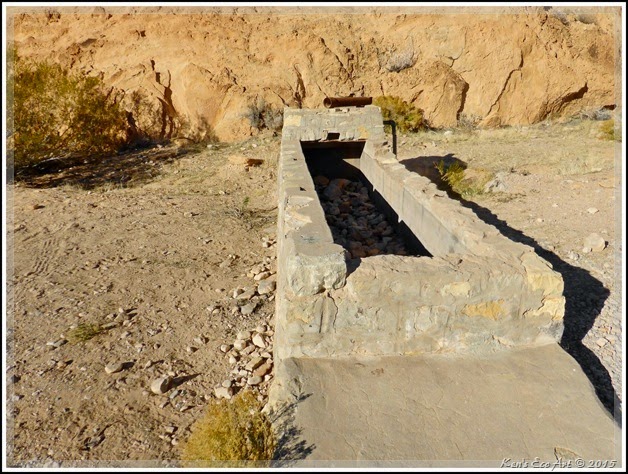 |
| (Fig. 09) |
|
Just south of Whitney Pocket the sandy desert is dotted by Joshua trees as well as various types of cacti. These rocks, weathered into rounded boulders, cavities, deep fissures and other formations, contain beautiful shades of orange and white mixed with the usual red sandstone, stained by iron compounds (Figs. 10-12).
|
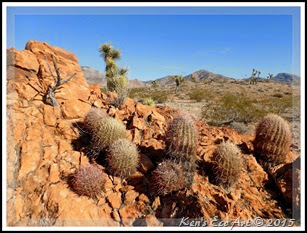 |
| (Fig. 10) |
|
 |
| (Fig. 11) |
|
|
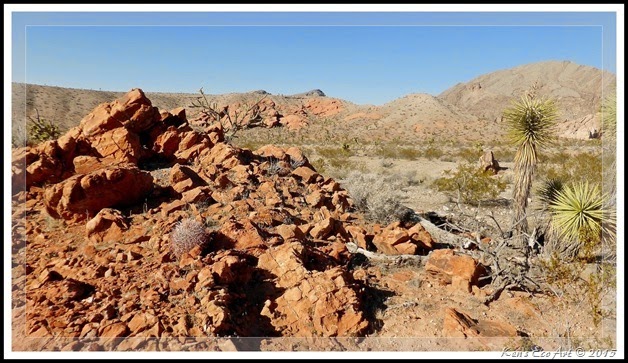 |
| (Fig. 12) |
|
Click here to [Return to the Previous Page]












